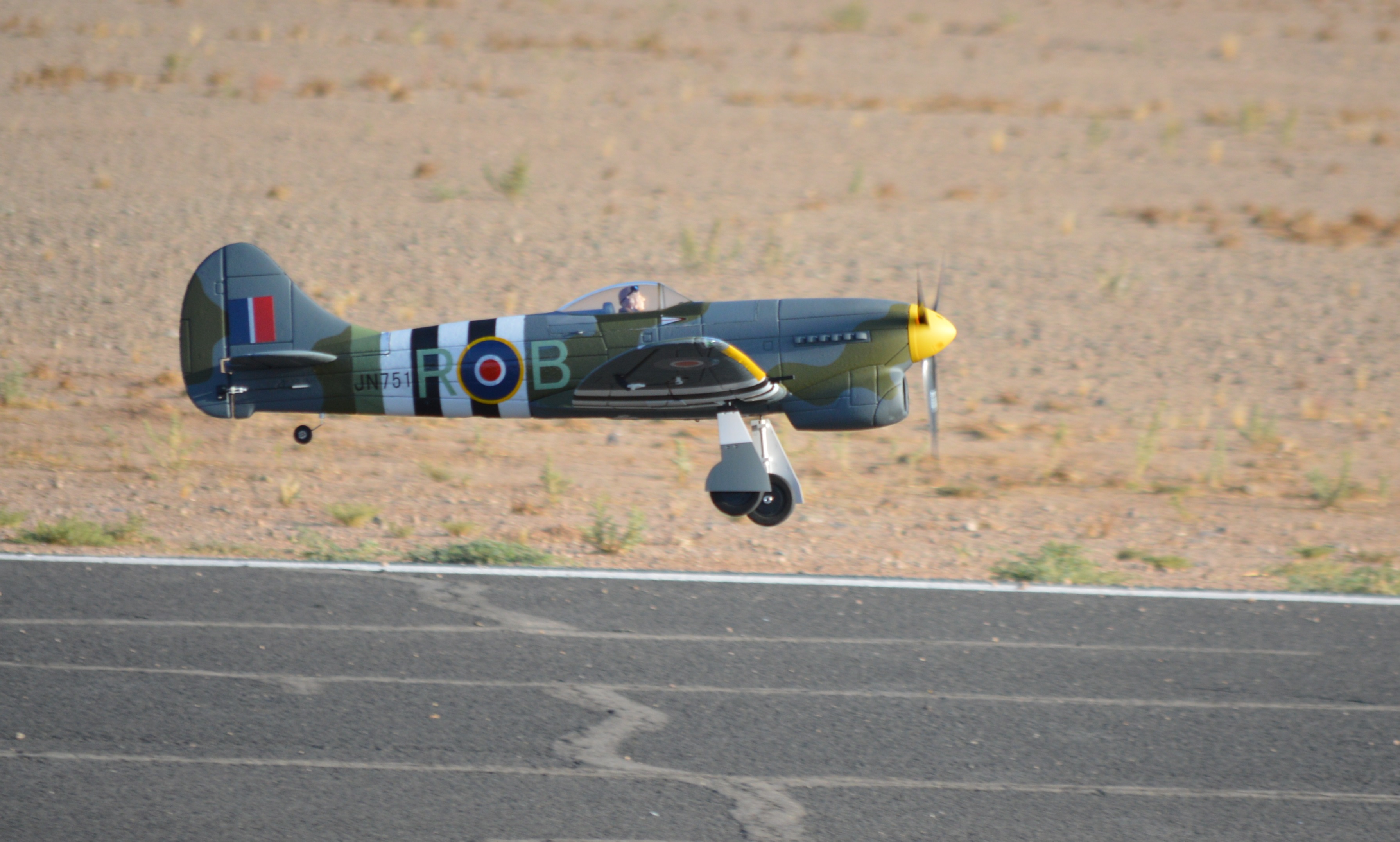


The old saying about a Tempest in a Teapot refers to a little thing that is being treated like a big thing because the surroundings are small. In this case, the Tempest is the British Hawker Tempest and it is no little thing.
I recently got the Dynam Hawker Tempest and enjoyed assembling it and have a couple of flights on it. Pretty nice war bird. I was looking for something a little unusual and British. The Tempest met both criteria. The Tempest is one of Dynam’s line of war birds that end up being about 1/10th scale models. The Tempest is an EPO model that runs on a 4 cell lipo battery.
 |
 |
The Tempest has a wing span of about 50 inches and a 40 inch length. It is powered by a 3720 500 kv motor that provides plenty of power. The airplane is fairly light and I find that takeoffs on my club’s asphalt runway occur in about 20 feet with only about half throttle if a scale departure is what you’re looking for. Otherwise, it pops in the air and heads up a steep angle.
I got the Tempest balanced about 10mm further aft than recommended without adding weight. Other pilots on RC Groups suggested that would work fine and it did. The maiden was flawless with only about two clicks of nose down trim. On the second flight I was able to get the battery a little further into the channel under the cowling and it balanced closer to what the instructions called for at 60mm. Again it flew great.
For the first couple of flights I noticed there was a bit of a hum as it flew by and I assumed it was from the propeller blades passing in front of the big open scoop for the oil cooler under the chin of the model. There was also some weakness in the nose. That should have been an indicator of potential trouble but I didn’t catch it.
On the fourth or fifth flight, I discovered that the camouflage paint scheme works pretty well. I had the plane low and lost orientation. I got it mostly wings level before hitting the ground but the crash broke off the nose.
 |
 |
 |
 |
One of the things about EPO models is that they repair very well. I used the hot water bath method to reinflate the crushed foam bubbles and bend things back into place. I also used the opportunity to add some strength to the nose using some bamboo skewers and carbon fiber ribbon on the inside of the fuselage. Additionally I made sure the motor and motor mount were secure. The result was the vibration and the hum from earlier totally disappeared.
With the bumps smoothed out or filled in with light weight spackle, I took the tail feathers to Lowes and had them match the gray paint a got a “sample” size for just a couple of bucks. With the paint job done, it is hard to see the damage and the plane’s nose is now rock solid.
 |
 |
Landings on hard surfaces are pretty easy. On my first approach I was a little hot and made some speed adjustments. I was surprised both at how fast the airplane slowed down and how slow it would fly. I established a landing attitude and it settled in for a nice 3-point landing. On the second approach, I managed my speed better and was again surprised at how slow it flew. I don’t recommend slow flight just over the runway but I just expected a slow touchdown when the takeoff occurred so quickly. Again, it floated a little but settled onto the runway smoothly.
You need some up elevator to keep the plane from nosing over. That has happened once or twice and comments from others say it is standard fare when landing on grass. The culprit is the landing gear is just about on the CG so it doesn’t take much to nose it over. A couple of small washers under the rear landing gear assembly attachment screws will give a couple of degrees of forward rake while allowing the gear still fit in the wells.
The Tempest is not widely modeled so I frequently get comments from fellow modelers. The Dynam version is a nice model and is impressive in the air.
The Tempest flight video is in the "At the flying Field" section on the web site with some other videos and I've linked it here too:


